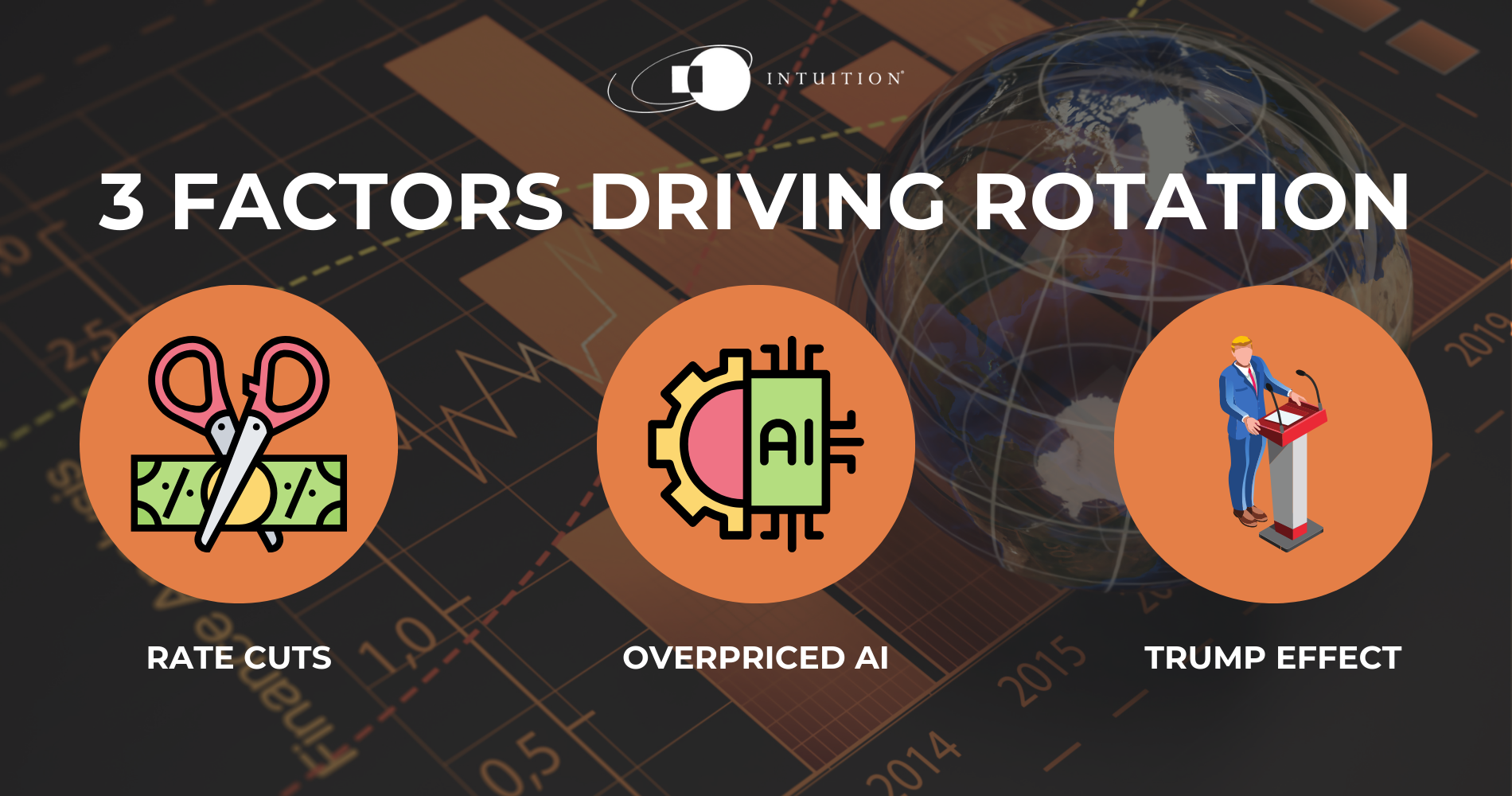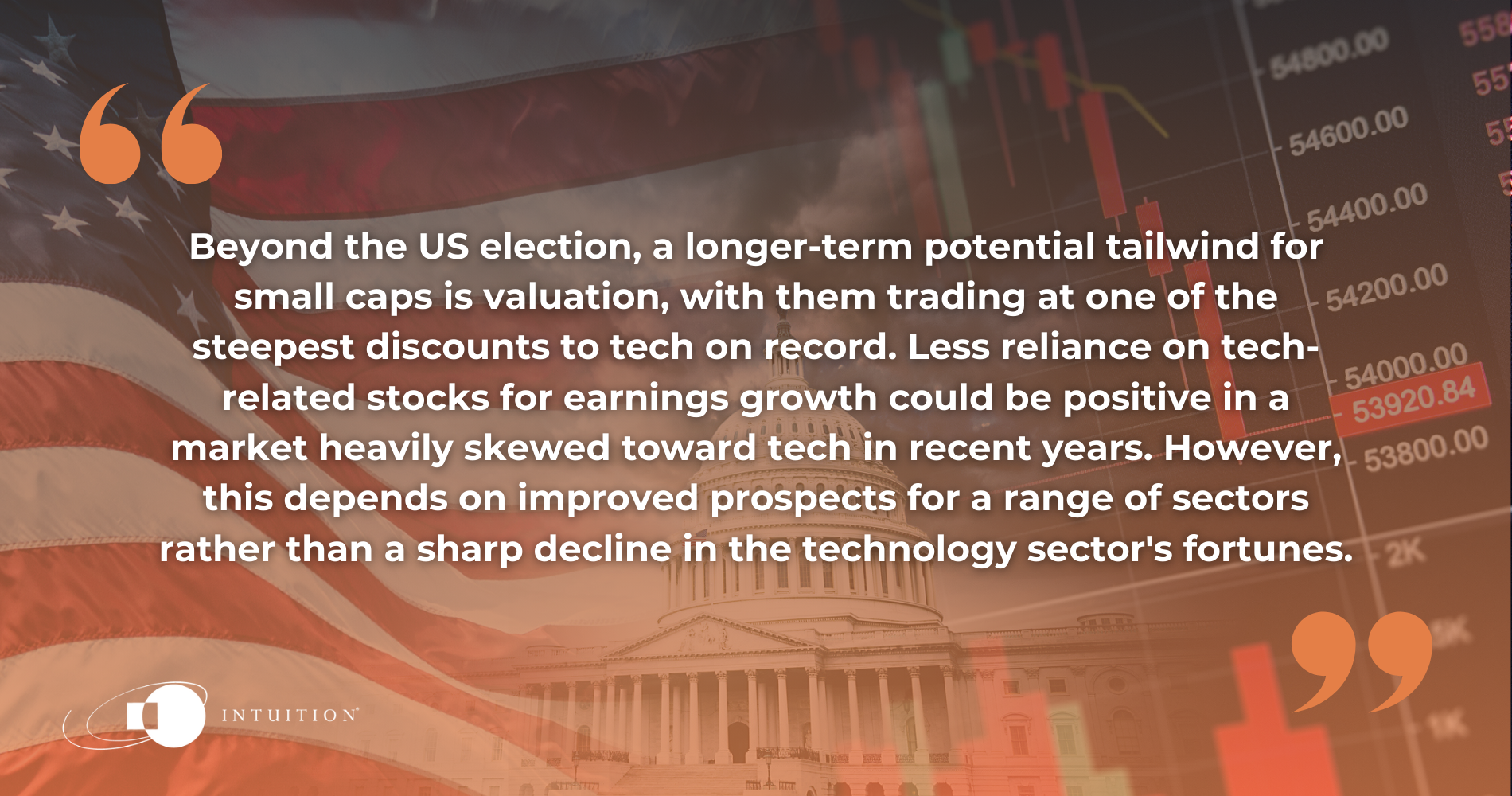Can rotation into small caps be sustained?
July saw a dramatic rotation in the US stock market out of all-conquering megacap tech stocks into small caps. While a market rebalancing would be welcome, gathering economic and political uncertainty point to volatility ahead, which is a headwind for riskier small caps.
For the first half of the year, the upward march of technology stocks, driven by the powerful AI narrative, seemed unstoppable, as tech indexes – led by the megacap-heavy Nasdaq 100 – dramatically outperformed others. But around mid-July the tables turned dramatically, with a violent rotation into small caps and cyclical stocks, leading some market commentators to call for a more meaningful market rotation.
To illustrate the scale and speed of the move, the Russell 2000 index of small caps was at one point outperforming the Nasdaq by 14% in July (a decent performance for any year, let alone month).
What, then, is behind this surge in popularity of smaller cap stocks?

Rates, overpriced AI, & the Trump effect
The initial trigger for the rotation was cooler-than-expected US inflation figures for June (published in July), leading the market to anticipate imminent Fed rate cuts, with the consensus now forecasting 25 bps cuts in both September and December. While rate cuts should theoretically benefit most sectors (including tech), small caps are considered more rate-sensitive than tech giants, which are shielded by large perceived moats and compelling secular growth narratives.
Another factor driving the rotation is growing unease about the benefits of AI and concerns that valuations may have run ahead of themselves. The market worries that AI technology may not deliver productivity gains to justify the high levels of investment and the extraordinary share price growth seen in the sector in the first half of the year.
A third factor was the so-called “Trump trade,” as market participants adjusted their positions based on the prospects of a Donald Trump/Republican sweep in the November elections. The premise is that such an outcome would lead to yield curve steepening, tax cuts, efforts to weaken the dollar, a renewed tariff war exerting upward pressure on inflation, and “reshoring” of industry benefiting smaller domestic-focused businesses over global companies like tech giants.
Importantly, the probability of a Trump/Republican victory has diminished following President Biden’s withdrawal and the revitalization of the Democrats’ campaign by their new candidate Kamala Harris. This narrowing gap adds to uncertainty, suggesting more volatility ahead – an environment in which risky small caps may struggle to sustain their recent gains.
***
Listen to this article and more on ‘The Intuition Finance Digest‘
Listen on Spotify | Listen on Amazon Music | Listen on Apple Podcasts
***

Growth prospects & valuations
Any further rotation into small caps will likely require improved earnings growth prospects. While rate cuts and continued disinflation should theoretically help small caps to that end, the consensus has become less sanguine on the global economy for the balance of the year. This could make life difficult for small caps. Some analysts fear a de-risking that would hurt cyclical small caps while benefiting defensive sectors and bonds, both of which have recently performed well following dramatic underperformance over the past couple of years.
Beyond the US election, a longer-term potential tailwind for small caps is valuation, with them trading at one of the steepest discounts to tech on record. Less reliance on tech-related stocks for earnings growth could be positive in a market heavily skewed toward tech in recent years. However, this depends on improved prospects for a range of sectors rather than a sharp decline in the technology sector’s fortunes.
Intuition Know-How has a number of tutorials relevant to the content of this article:
- Equity Markets – An Introduction
- Equity Trading – An Introduction
- Equity Valuation – An Introduction
- Equity Indices
- Equity Returns Analysis
- US Equity Market
- Monetary Policy
- Economic Indicators – An Introduction
- Inflation – An Introduction
- AI & Machine Learning (ML) – Primer


